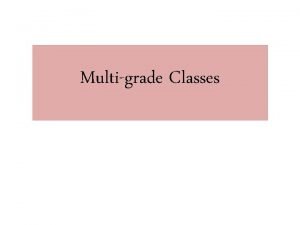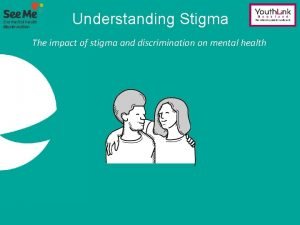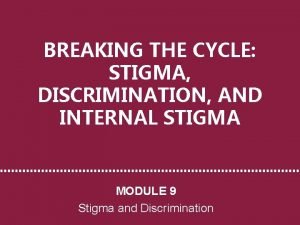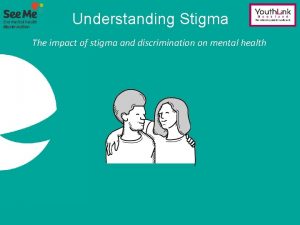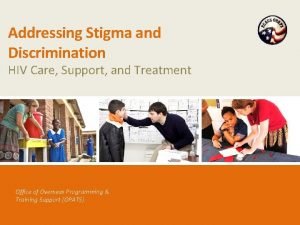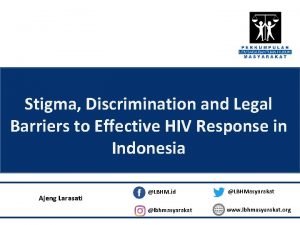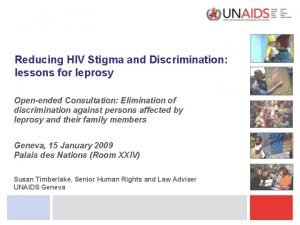Stigma Discrimination and HIV Prevention Office of Overseas







- Slides: 7

Stigma, Discrimination, and HIV Prevention Office of Overseas Programming & Training Support (OPATS)

Session Objectives § Participants appreciate stigma and discrimination’s impact on HIV prevention. § Participants use participatory approaches to address stigma and discrimination in their communities.

Stigma and Discrimination 1 § Process of devaluation of people living with or associated with the disease § Linked to power and domination in society § Reinforces inequality whereby some groups are made to feel superior and others devalued § When stigma is acted upon, the result is discrimination 1 UNAIDS. April 2005. HIV-Related Stigma, Discrimination and Human Rights Violations: Case Studies of Successful Programmes. Geneva: UNAIDS.

Types of Stigma § § Experienced/enacted stigma Anticipated/perceived/felt stigma Self or internal stigma Intersecting/layered stigma

Root Causes of Stigma & Discrimination § Lack of knowledge/ignorance § Moral judgment § Power and poverty

Addressing Stigma with Immediate Action 1 § Raise Awareness: Close the Intention-Action Gap – Foster understanding and motivation for stigma reduction § Address Transmission Fears and Misconceptions – How it is and is not transmitted – Respond to specific fears related to daily living context § Discuss and Challenge “Shame and Blame” – The values and beliefs that underlie stigma and discrimination: Where they come from? What they do? Taken from Nyblade L. 2012. What works for reducing stigma and discrimination: Programmes and tools for reducing stigma and discrimination, including human rights approaches. Presentation at International AIDS Society Conference 2012. Washington DC: IAS. 1

Creating Partnerships to Address Stigma 2 § PLHA to lead stigma mitigating activities – Build capacity and resilience – Strengthen networks and associations – Address self-stigma § Engage a range of actors – – Opinion leaders Media Family members Youth § Foster interaction between stigmatizers and stigmatized § 2 Model desired behavior and reward role models Ibid.




